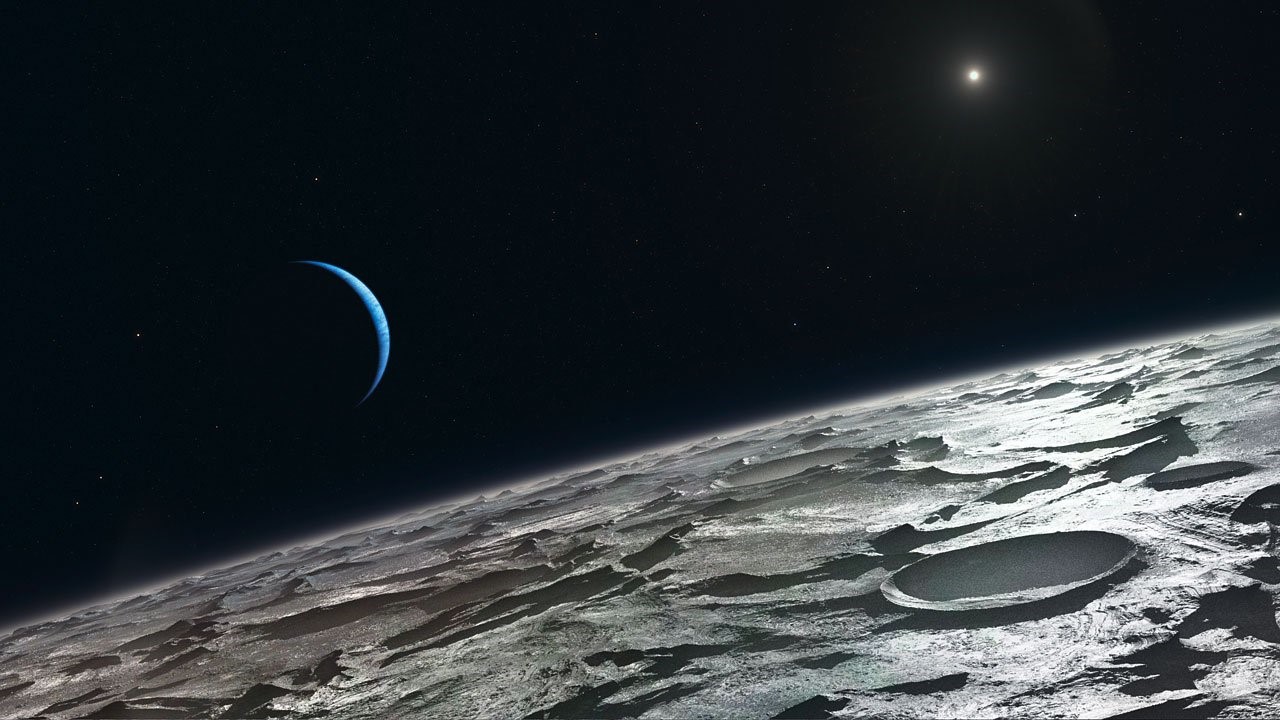
Ever wondered about the mysteries swirling around Triton, Neptune's largest moon? Well, you're in for a treat! Triton stands out in our solar system for a bunch of cool reasons. For starters, did you know it orbits Neptune in the opposite direction to most other moons? Yep, it's a rebel at heart. But that's just the tip of the iceberg. With geysers shooting nitrogen ice and a surface younger than most, Triton's got secrets that scientists are itching to unravel. Triton's unique features make it a fascinating subject for space enthusiasts and casual readers alike. So, buckle up as we dive into the 12 best Triton moon facts that'll leave you starstruck and hungry for more cosmic wonders. Ready to blast off into a world of icy geysers, backward orbits, and moon mysteries? Let's go!
What Is Triton?
Triton stands out as Neptune's largest moon and boasts a unique distinction in the solar system. Unlike most moons, Triton orbits its planet in the opposite direction of Neptune's rotation, a phenomenon known as a retrograde orbit. This intriguing characteristic hints at Triton's possible origin as a captured object from the Kuiper Belt, a region beyond Neptune filled with icy bodies.
Triton's Icy Surface and Geysers
-
Triton's surface is covered in frozen nitrogen, with water ice, frozen carbon dioxide, and solid methane scattered across its landscape. This composition creates a highly reflective surface, making Triton one of the brightest moons in the solar system.
-
Geysers on Triton spew nitrogen gas and dust particles into space, reaching heights of up to 8 kilometers (5 miles). These dramatic plumes were first observed by the Voyager 2 spacecraft during its flyby in 1989, providing a fascinating glimpse into the moon's geologic activity.
The Atmosphere of Triton
-
Despite its cold environment, Triton has a thin atmosphere composed mainly of nitrogen with small amounts of methane. The presence of this atmosphere, although tenuous, is unusual for a moon in the outer solar system and is primarily sustained by the sublimation of nitrogen ice from the surface.
-
Seasonal changes on Triton influence its atmospheric pressure. As Triton moves through different parts of its orbit around Neptune, variations in sunlight cause the nitrogen ice to sublimate at different rates, leading to changes in atmospheric pressure.
Triton's Orbit and Rotation
-
Triton's retrograde orbit is a key to understanding its history. This unusual path suggests that Triton was not originally part of Neptune's system but was captured by Neptune's gravity. Such an event would have caused massive disruptions to Neptune's original moons, possibly leading to their destruction or alteration of their orbits.
-
The moon completes a full orbit around Neptune in about 5.9 Earth days. Triton's rotation period is synchronous with its orbit, meaning it always shows the same face to Neptune, similar to how our Moon always shows the same face to Earth.
The Temperature and Ice Volcanoes of Triton
-
Surface temperatures on Triton are among the coldest in the solar system, dipping to approximately -235 degrees Celsius (-391 degrees Fahrenheit). These frigid conditions contribute to the moon's icy landscape and geologic processes.
-
Cryovolcanism is a fascinating feature of Triton, with ice volcanoes releasing a mixture of liquid water and ammonia onto the surface. This process is similar to the volcanic activity on Earth but with ice taking the place of molten rock.
Triton's Potential for an Ocean
- Scientists speculate that beneath Triton's icy shell, there might be a subsurface ocean of liquid water. This hypothesis is based on the moon's geologic activity and the presence of cryovolcanoes, suggesting internal heat sources that could maintain such an ocean.
The Colorful Patches of Triton
- Triton's surface is marked by striking contrasts, with dark streaks and pink, reddish, or brown patches. These color variations are thought to be caused by the distribution of different ices and by the exposure of material from beneath the surface.
Voyager 2's Historic Flyby
- The most detailed images and data we have of Triton were collected by NASA's Voyager 2 spacecraft in 1989. This historic flyby provided invaluable insights into Triton's atmosphere, geology, and the intriguing geysers, shaping our understanding of this distant moon.
The Future of Triton Exploration
- Future missions to Triton are in the conceptual phase, with scientists eager to explore this enigmatic moon further. Such missions could unveil more about Triton's origins, its potential subsurface ocean, and the dynamics of its interaction with Neptune, offering new perspectives on the outer solar system's moons.
A Glimpse Beyond Earth's Confines
Diving into the mysteries of Triton, Neptune's largest moon, has been nothing short of a cosmic adventure. From its retrograde orbit to the captivating cryovolcanoes, each fact about Triton challenges our understanding of the celestial bodies in our solar system. Its thin atmosphere, laced with nitrogen, and the potential for a subsurface ocean, hint at the complexities and wonders that lie beyond our home planet. The journey through Triton's icy landscapes and geysers shooting into space not only enriches our knowledge but also sparks curiosity about what else is out there, waiting to be discovered. As we continue to gaze at the stars, Triton serves as a reminder of the endless possibilities and mysteries the universe holds. So, next time you look up at the night sky, remember that places like Triton are out there, showcasing the beauty and diversity of our solar system.
Was this page helpful?
Our commitment to delivering trustworthy and engaging content is at the heart of what we do. Each fact on our site is contributed by real users like you, bringing a wealth of diverse insights and information. To ensure the highest standards of accuracy and reliability, our dedicated editors meticulously review each submission. This process guarantees that the facts we share are not only fascinating but also credible. Trust in our commitment to quality and authenticity as you explore and learn with us.


